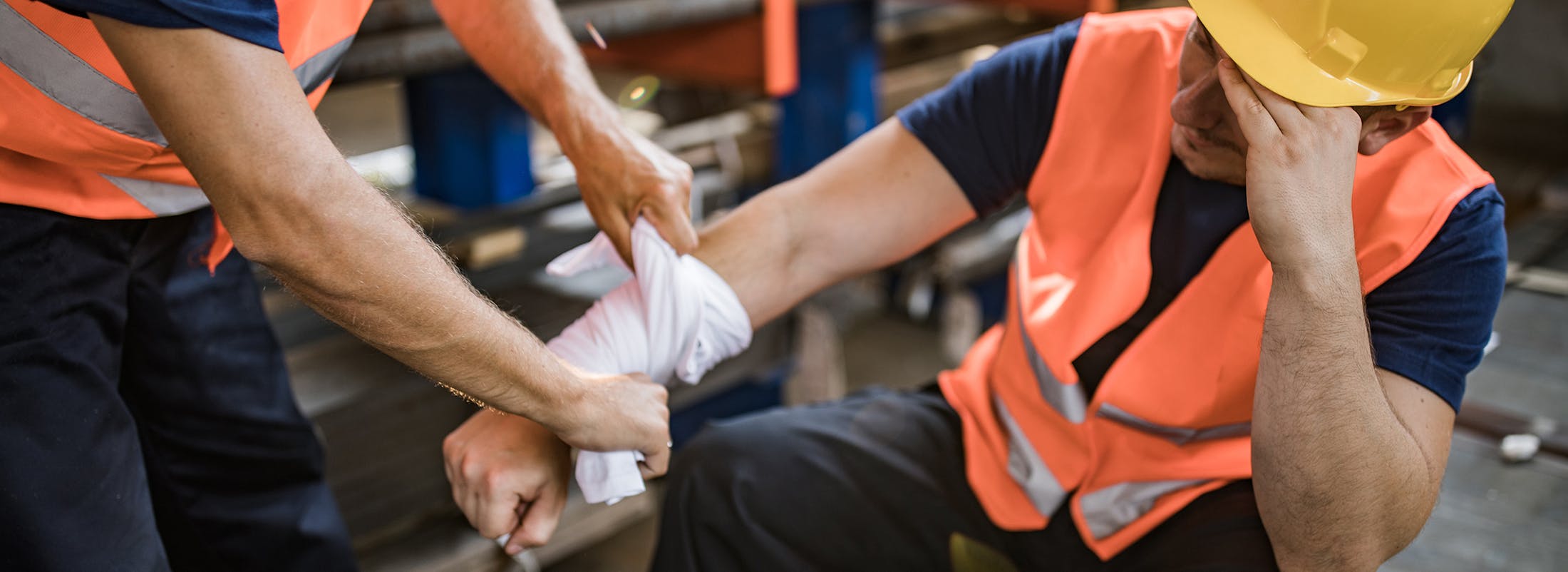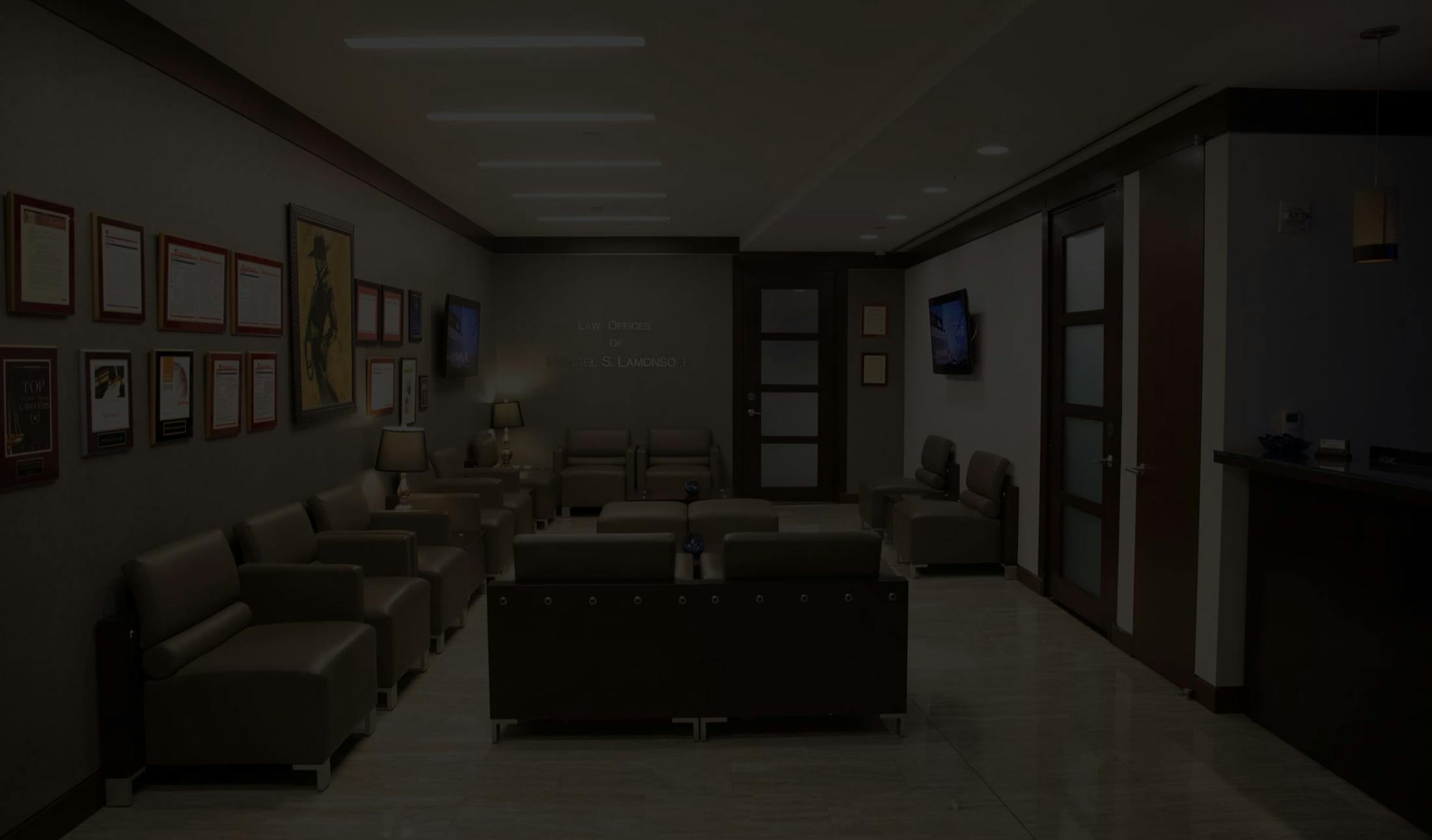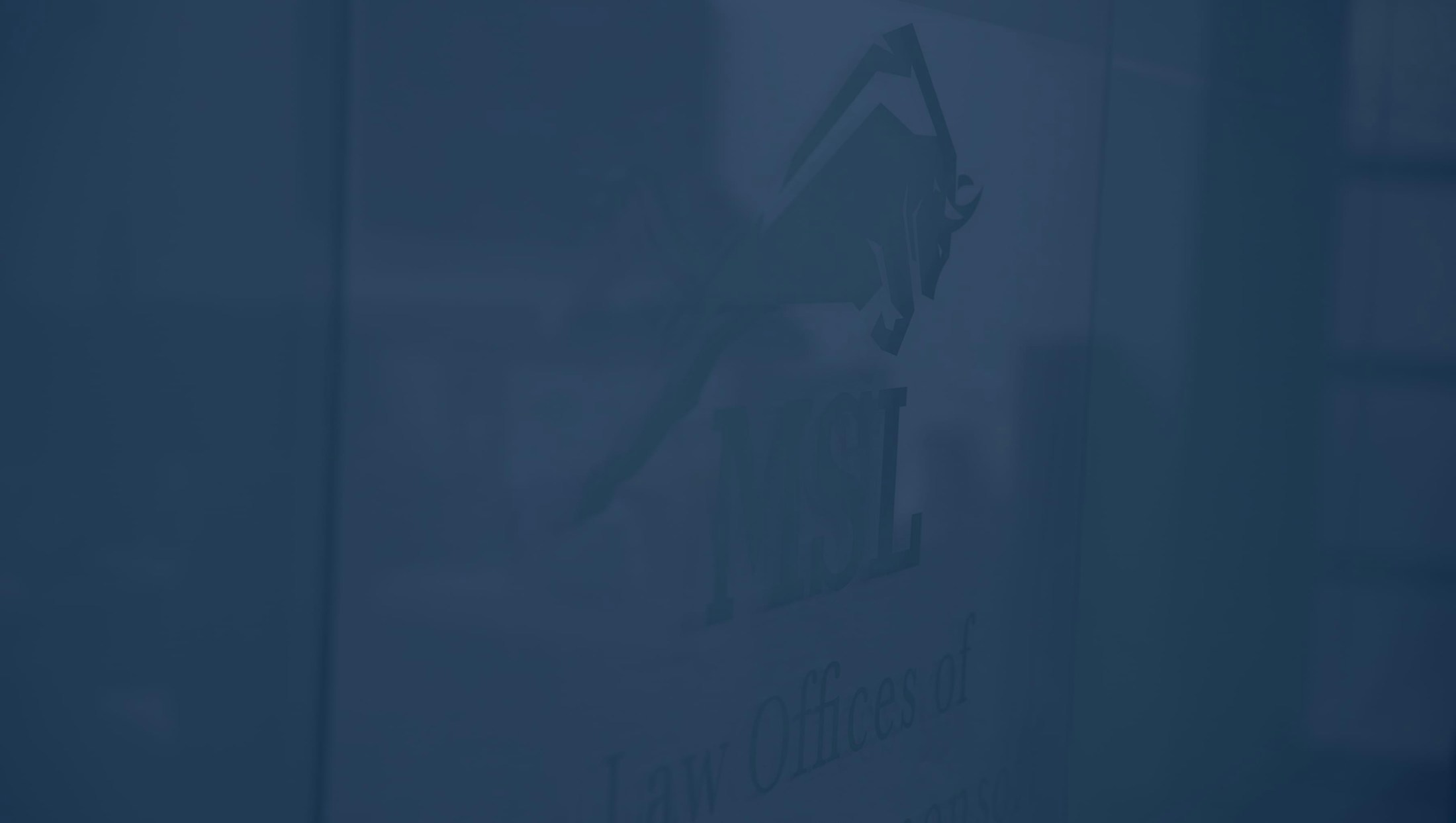At The Law Offices of Michael S. Lamonsoff, PLLC, our skilled construction accident attorneys will move fast to collect strong evidence in order to establish the severity of your injuries, the impact on your life, and your long-term prognosis. This evidence is required during settlement negotiations with insurance companies and in court, where the goal is to secure the maximum compensation for your medical expenses, lost wages, pain and suffering, and any long-term disability.
Injuries on a Construction Site

Types of Injuries from Construction Accidents
Construction sites are among the most dangerous workplaces, with workers facing daily risks of serious accidents due to heavy machinery, hazardous materials, high elevations, and unstable structures. Falls, electrocutions, falling objects, and equipment failures are just some of the risks that can lead to life-altering injuries or fatalities. When safety regulations are ignored, or negligence is involved, workers and their families may suffer devastating consequences.
Leading construction accident lawyer Michael S. Lamonsoff, known as “The Bull,” has been selected as one of the 10 Best Attorneys in New York City by the American Institute of Personal Injury Attorneys. He has also been honored with the Litigator of the Year award by the American Institute of Trial Lawyers. With more five-star reviews on AVVO than any other personal injury lawyer in New York and a perfect 10.0 AVVO rating, Michael S. Lamonsoff has built a reputation for fearless, results-driven advocacy for injured construction workers.
Common Types of Construction Accident Injuries
Construction sites are inherently dangerous, with workers exposed to numerous hazards that can lead to accidents and injuries. The combination of heavy machinery, elevated work areas, hazardous materials, and unpredictable site conditions increases the risk of accidents. These injuries can range from minor to catastrophic, sometimes leading to long-term disabilities or even fatalities.
Traumatic Brain Injuries (TBI)
A traumatic brain injury can occur when a worker sustains a blow to the head from falling objects, slip-and-fall accidents, or heavy equipment malfunctions. Even with a hard hat, the force of impact can cause significant brain damage.
- Concussions – A mild form of brain injury that can cause headaches, dizziness, confusion, and memory loss.
- Skull Fractures – Severe head trauma that can lead to brain bleeding, cognitive impairment, and permanent disability.
- Hematomas and Hemorrhages – Internal bleeding in the brain, which can be life-threatening if not treated immediately.
Spinal Cord Injuries
Falls from scaffolding, ladders, or other elevated surfaces can result in spinal cord injuries, leading to partial or complete paralysis.
- Herniated Discs – Damage to the spinal discs that can cause chronic pain and restricted mobility.
- Paraplegia and Quadriplegia – Severe spinal cord trauma that can result in the loss of function in lower limbs or all four limbs.
- Nerve Damage – Compression or severing of spinal nerves leading to numbness, weakness, or loss of motor control.
Fractures and Broken Bones
The high-impact nature of construction work makes bone fractures a frequent injury, often requiring extensive medical treatment and rehabilitation.
- Compound Fractures – When a broken bone pierces the skin, increasing the risk of infection.
- Crushed Bones – Heavy equipment or collapsing structures can cause bones to be crushed beyond repair.
- Multiple Fractures – Workers may suffer breaks in more than one location, complicating recovery and mobility.
Burn Injuries
Construction sites generally have electrical systems, chemicals, and open flames that can cause serious burn injuries.
- Thermal Burns – Caused by fires, hot surfaces, or explosions on-site.
- Chemical Burns – Exposure to hazardous chemicals that can damage skin, tissue, and even internal organs.
- Electrical Burns – Contact with live wires or power lines that can cause deep tissue damage and cardiac complications.
Electrocution Injuries
Direct contact with exposed wiring, power tools, or overhead power lines can result in electrocution, which may be fatal in severe cases.
- Cardiac Arrest – A sudden electrical shock can stop the heart from beating.
- Neurological Damage – Electric currents can severely damage the nervous system, leading to muscle weakness, paralysis, or seizures.
- Severe Burns – Internal and external burns caused by high-voltage electrical shocks.
Crush Injuries
Construction workers are at risk of being caught between heavy machinery, collapsing walls, or falling debris, leading to devastating crush injuries.
- Internal Organ Damage – Compressed body parts can cause severe internal bleeding and organ failure.
- Compartment Syndrome – Increased pressure within muscles due to swelling, cutting off circulation and leading to permanent damage.
- Amputations – Severe crushing injuries may result in the loss of a limb, either at the time of the accident or through a surgical procedure.
Cuts and Lacerations
Sharp tools, heavy-duty machinery, and construction materials can cause deep cuts, lacerations, and puncture wounds that may lead to severe infections.
- Deep Lacerations – Can sever tendons, nerves, and blood vessels, leading to loss of function in affected areas.
- Penetrating Cuts – Foreign objects such as nails or metal shards can pierce the body, causing serious internal damage.
- Sepsis Risk – Untreated cuts, lacerations or puncture wounds can lead to life-threatening infections.
Eye Injuries and Vision Loss
Debris, chemical exposure, and welding accidents can severely damage a worker’s vision, sometimes causing permanent blindness.
- Corneal Abrasions – Scratches on the eye’s surface from dust, wood, or metal particles.
- Chemical Exposure – Contact with hazardous substances that can burn and deteriorate eye tissues.
- Retinal Detachment – A serious injury that can lead to partial or complete vision loss.

Hearing Loss and Ear Injuries
Construction sites are often noisy environments, and prolonged exposure to high-decibel sounds or sudden explosive noises can cause hearing damage.
- Tinnitus – Persistent ringing or buzzing in the ears due to loud noise exposure.
- Temporary Hearing Loss – Short-term loss of hearing ability caused by excessive noise.
- Permanent Hearing Impairment – Damage to the inner ear structures that result in lifelong hearing disability.
Respiratory Injuries and Illnesses
Construction workers frequently inhale dust, toxic fumes, and other airborne contaminants that can lead to serious lung conditions.
- Silicosis – Lung disease caused by prolonged exposure to silica dust from cutting or grinding concrete.
- Asbestos-Related Illnesses – Inhalation of asbestos fibers can cause mesothelioma and lung cancer.
- Chronic Obstructive Pulmonary Disease (COPD) – Long-term exposure to harmful particles leading to breathing difficulties and lung damage.
Soft Tissue Injuries
Muscle strains, sprains, and ligament tears are common on construction sites due to the physically demanding nature of the work.
- Torn Ligaments – Knee, ankle, or shoulder ligament injuries that require surgery and rehabilitation.
- Muscle Strains – Overexertion or heavy lifting can cause painful muscle injuries.
- Whiplash – Sudden movements can strain the neck muscles, leading to chronic pain and stiffness.
Psychological Injuries
Beyond physical harm, construction accidents can leave workers suffering from emotional and psychological trauma.
- Post-Traumatic Stress Disorder (PTSD) – Anxiety, flashbacks, and emotional distress following a traumatic accident.
- Depression – Coping with severe injuries or permanent disabilities can lead to depression.
- Sleep Disorders – Chronic pain and anxiety may cause insomnia and other sleep disturbances.
Construction accident injuries can have serious consequences, leading to long-term medical treatment, lost wages, pain and suffering, and diminished quality of life. At The Law Offices of Michael S. Lamonsoff, PLLC, our experienced construction accident attorneys will fight to recover the largest possible financial compensation to help the injured worker rebuild their life.

How Our Construction Accident Lawyers Will Prove Your Injuries
Member of:
- Board of Directors of NY State Trial Lawyers Association
- American Association for Justice
- NY County Lawyers Association
Educated at:
- University of Arizona
- Benjamin N. Cordozo School of Law
- Double post-masters degrees in psychology at Columbia University
Awards:
- 6X Super Lawyers Panel
- Million Dollar and Multi Million Dollar Advocates Forum

Medical Evidence
Medical documentation is one of the most critical components of a construction accident case. It establishes the nature and severity of your injuries and their long-term implications.
- Emergency Room Records – Immediate medical reports from paramedics, ER doctors, and trauma specialists documenting your initial diagnosis.
- Hospitalization and Surgical Reports – Detailed records of surgeries, treatments, and hospital stays related to your injuries.
- Doctor’s Notes and Prognosis – Statements from your treating physicians outlining your recovery timeline, limitations, and potential for permanent disability.
- Diagnostic Imaging – X-rays, MRIs, CT scans, and other imaging studies that provide visual proof of fractures, spinal cord damage, or internal injuries.
- Prescription Records – Evidence of pain management treatments, physical therapy, and ongoing medical needs.
- Rehabilitation and Physical Therapy Reports – Documentation of therapy sessions and progress reports demonstrating the long-term effects of your injuries.
Construction Site Evidence
Our construction accident lawyer will gather evidence from the accident scene to prove negligence, unsafe working conditions, and violations of safety protocols.
- Accident Reports – Official reports filed with OSHA, supervisors, or site safety officers detailing how the accident occurred.
- Worksite Photographs and Videos – Images and videos showing hazardous conditions, defective equipment, and the scene immediately after the accident.
- Safety Violations and OSHA Citations – Evidence of regulatory breaches or previous citations for unsafe worksite conditions.
- Equipment Maintenance Records – Documentation proving whether machinery or tools were properly maintained or if equipment failure played a role.
- Blueprints and Worksite Layouts – Construction plans and site layouts to demonstrate inadequate safety measures or design flaws.
Eyewitness Testimony
Witness statements can be instrumental in corroborating your account of the accident and establishing fault.
- Coworker Statements – Testimony from fellow workers who saw the accident occur or can confirm unsafe conditions.
- Supervisor and Foreman Testimony – Input from on-site managers regarding company policies, training, and safety measures in place.
- Third-Party Witnesses – Testimony from bystanders, contractors, or visitors who witnessed the incident.
Expert Testimony
Experts can provide key insights into the cause of the accident, the extent of your injuries, and your long-term disability.
- Medical Experts – Physicians or specialists who can testify about the severity of your injuries and their impact on your future.
- Accident Reconstruction Experts – Professionals who recreate the accident to illustrate how it happened and who was at fault.
- Workplace Safety Experts – Experts who assess OSHA violations, safety lapses, and employer negligence.
- Vocational Rehabilitation Experts – Specialists who determine whether your injuries prevent you from returning to work and if you qualify for disability compensation.

Construction Accident Cases Awards & Verdicts in New York
These are some of the recent construction accident case awards and verdicts won by Michael Lamonsoff “The Bull.”

Financial and Employment Records
To prove lost wages, diminished earning capacity, and the financial toll of your injuries, our construction accident lawyers will collect the following:
- Pay Stubs and Tax Returns – Documents proving your pre-accident income and the financial losses incurred due to missed work.
- Employment Records – Evidence of your job title, responsibilities, and previous earnings to establish how the injury affects your career.
- Disability Benefits and Workers’ Compensation Claims – Records related to any workers’ compensation claims or disability benefits received.
Pain and Suffering Documentation
Since pain and suffering damages are subjective, compelling documentation is needed to show the emotional and psychological toll of your injuries.
- Personal Injury Journal – A daily log detailing your pain levels, mobility struggles, emotional distress, and the ways your injury has impacted daily life.
- Psychological Evaluations – Reports from mental health professionals diagnosing conditions such as PTSD, anxiety, or depression caused by the accident.
- Testimony from Family and Friends – Statements describing how your injury has affected your relationships, lifestyle, and overall well-being.
Surveillance Footage and Photographic Evidence
Insurance companies will scrutinize claimants’ activities to dispute the severity of their injuries. Our lawyer will gather:
- Photos and Videos – Photographs and videos of your injuries, the construction equipment involved in the accident, and the site of accident.
- Surveillance Footage – Security camera footage from the worksite that may capture how the accident occurred or the unsafe conditions on the site.
Long-Term Disability and Future Medical Needs
If your injuries result in long-term disability, our attorneys will collect:
- Life Care Plans – Expert assessments outlining future medical care, home modifications, and assistive devices required.
- Projected Medical Costs – Estimates of long-term expenses such as surgeries, therapy, and in-home nursing care.
- Disability Ratings – Official evaluations determining the percentage of disability and eligibility for long-term benefits.
Get Strong Legal Representation from Our Top-Rated Construction Accident Attorney
At The Law Offices of Michael S. Lamonsoff, PLLC, our dedicated legal team, led by construction accident lawyer Michael Lamonsoff “The Bull,” is determined to hold negligent construction companies, contractors, subcontractors, construction site owners, and construction equipment manufacturers liable for your injuries and losses. With our aggressive, client-focused strategies, you can recover the largest possible compensation you are owed. To schedule your free consultation, call us today at 212-962-1020 or contact us online.


